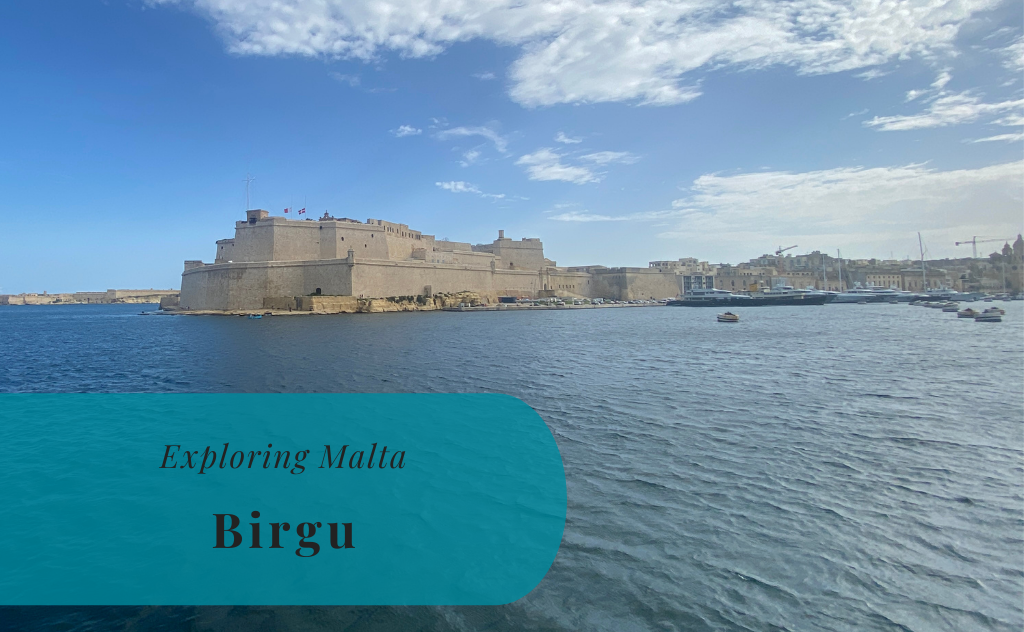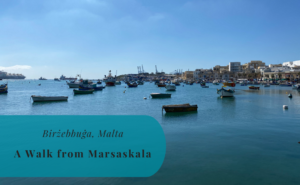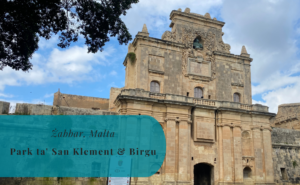Birgu is one of the most historic towns in Malta and part of an urban area known as the Three Cities. The Three Cities are famous for their large fortifications and Birgu is no exception with its most prominent building, Fort Saint Angelo, at the tip of the peninsula. The other two cities making up the Three Cities are Cospicua and Senglea.
Birgu is also known by its Italian name Città Vittoriosa. That is Italian for the victorious city and a name Birgu received after the Great Siege of Malta in the 16th century. The past is still visible, with signs from both the eras of the Order of Saint John and the British Empire.
Our blog posts about Birgu:





The History of Birgu
The city of Mdina was until the arrival of the Order of Saint John the capital of Malta. That changed when the knights moved to Malta in 1530, making Birgu their capital. Their arrival also meant the beginning of the fortification of the town and the castle of Saint Angelo was built at the mid of the 16th century. It didn’t take long before the castle saw its first battles.
The Great Siege of Malta took place in 1565 when the Ottoman Empire tried to conquer the island. The battles included a long siege of Birgu and it was first when reinforcements arrived from Sicily that the Ottomans retreated from the island. The end of the siege also gave Birgu the alternative name Città Vittoriosa. That is Italian, meaning victorious city.
In 1571, the capital of Malta moved across the bay to the newly created city of Valletta. Birgu was, however, not saved from future battles. The Order of Saint John was in 1798 replaced by Napoleon and France and a few years later in the year 1800 Malta became a British protectorate.
Birgu was not spared during the bombardments of the second world war. Its location close to the Grand Harbour meant that the city was targeted by German and Italian bombers.
The Order of Saint John has since returned to Birgu and Malta. Now known as the Sovereign Military Order of Malta, it has its main base in Rome. But treaties dating back to the 1990s grant the order the use of the upper portion of Fort St. Angelo in Birgu.



Sights in Birgu
Considering its small size, the distance between the many sights to explore in Birgu is not big. The city has many historical sights and they are not all part of the large fortifications.
Advanced Gate
This is one of the three main gates of Birgu, one of four that once existed. It stands at the Saint John Bastion.
Bishop’s Palace
The Bishop’s Palace has a long history and was acquired as the palace of the bishop in 1542. The palace also included the bishop’s court and had a prison in its vicinity for those awaiting trial or serving their sentences. Since the bishop moved to Valletta at the end of the 16th century the building has found other uses. It has since been used both for residential housing as well as a school.
Couvre Porte Counterguard
Couvre Porte Counterguard was built to protect the Saint John Bastion in the 17th century. A counterguard is a smaller fortification built outside the main fortification. The British later used it as barracks and today it houses Malta at War Museum.
Couvre Porte Gate
This is another of the three main gates of Birgu, out of the four that once existed. It is at the side of the Couvre Porte Counterguard close to Saint John Bastion.
Fort Saint Angelo
The most prominent sight in Birgu is without doubt Fort Saint Angelo. The origins of the fort date back to the 13th century and many previous rulers of Malta. The more modern history started with the arrival of the Order of Saint John in 1530. As Birgu became the capital of Malta, the old castle ruins were turned into a fort.
During its history, it has been the headquarters for the French Army and the British commissioned the fort as a stone frigate named HMS Egmont. The damages it suffered during the second world war have been repaired and the fort is today mostly a museum. Parts of the fort are also managed by the Order of Saint John, today mostly known as the Sovereign Military Order of Malta.
Gate of Provence
This is the third of the main gates of Birgu out of the four that once existed. It is in the vicinity of Saint John Bastion.
Inquisitor’s Palace
The first General Inquisitor arrived in Malta in 1574 and he received his official residence in Birgu. The palace is today one of few in the world from this time that has survived and does today house the National Museum of Ethnography.
Malta at War Museum
Malta at War Museum is located within the Couvre Porte Counterguard. The museum tells the story of Malta and the islands’ role during the second world war.
Malta Maritime Museum
Malta Maritime Museum is housed in the former Royal Naval Bakery along Birgu’s waterfront. The museum showcases the maritime history of the Maltese islands and is considered one of the largest museums in the country.
Post of Castile
The original parts of the Post of Castile were built in the 16th century, but most of what is to be seen today were created during the 18th century at the direction of Charles François de Mondion. Post of Castile played an important role in the battles against the Ottomans during the Great Siege.
Saint James Bastion
Saint James Bastion is a part of Birgu’s massive fortifications and dates back to the 16th century. Major changes were done to the bastion in the 18th century.
Saint John Bastion
The Saint John Bastion is also a part of the fortifications of Birgu and does also house two of the three main gates to the city. Together with Saint James Bastion, it makes up the two main bastions for the defenses along Birgu’s land front.
Saint Lawrence’s Church
Saint Lawrence’s Church, or the Collegiate Church of Saint Lawrence, is one of the main churches in the city. It was completed in 1697 and survived until the second world war. The church was bombed in 1941 and 1942 during German air raids and it would take until 1949 before it was partly rebuilt. It would take until 1952 before also the dome was rebuilt.
Vittoriosa Yacht Marina
The marina in Birgu has some of the most impressive yachts on the island. The view from the Birgu Waterfront or from the Three Cities Ferry between Valletta and Conspicua rarely disappoint someone interested in larger yachts.





Birgu Activities
In addition to sightseeing and exploring the museums there are a few more activities to do in Birgu. The big city activities such as shopping might be a bit limited, but there are a few restaurants and if you happen to have a yacht then the possibilities are probably endless.
Beaches in Birgu
There are no official beaches in Birgu. Instead, there are a few places where swimming by some can be considered possible. For an official beach, then the closest is a bit north at Rinella Bay.
Hiking to and from Birgu
Hiking on Malta can be great but you can expect the risk of having to take a detour, ending up on a road, or having to turn back. Always be prepared with plenty of fluids and sun protection.
To the East
Following the coast, first to the north and later to the west, will eventually take you along a more rural path. If you walk about 10 kilometers you will eventually end up in the town of Marsaskala.
To the West
To the west is a more urban path. Walking around the Grand Harbour will take you to the capital of Valletta. You can either walk around the peninsula or continue across to the next bay and the waterfront path towards Sliema.
Shopping in Birgu
There are a few shops in the three cities, most of which can be found in Cospicua. To find more shopping possibilities a walk to either Fgura or Żabbar might be necessary. There is also the possibility to take the ferry across to Valletta where there are more shops.



Excursions from Birgu
With Valletta only a short ferry ride away the rest of the island is within easy reach for day trips. Some of the more easily accessible towns are just a short walk away and others are reachable by public transport.
Fgura
Fgura is a town right outside the walls of the Three Cities. The main street has many small shops, usually more oriented towards the locals than to tourists. This is also one of the easier places to find local busses to either Valletta or to towns such as Marsaskala.
Marsaskala
Marsaskala is another coastal resort town located to the east. This former fishing village has grown into one of the larger towns in South-Eastern Malta.
From our visits:
- Marsaskala – Exploring Malta
- Malta Highlights – November 2021
- Marsaskala, Malta – Sant’Antnin Family Park
- Marsaskala, Malta – Exploring the Playgrounds
Marsaxlokk
Marsaxlokk is an old fishing village famous for its traditional colorful boats and the daily market. This is one of the main tourist attractions in the eastern part of Malta. The colorful fishing boats, known as Luzzu, are an addition to the Maltese culture dating back to the early 12th century.
From our visits:
The Three Cities – Birgu, Cospicua, and Senglea
Birgu is part of what is known as the Three Cities, the other two are the cities of Cospicua and Senglea. These two cities are within easy access for excursions from Birgu as they are just a short walk away.
From our visits:
- Cospicua (Bormla) – Exploring Malta
- Senglea (Isla) – Exploring Malta
- Marsaskala, Malta – A Hike to Senglea
Valletta
Valletta, the capital of Malta, is one of the places that most people visiting the country will try to see at least once. It is also that city that you will see across the Grand Harbor each time you look out over the water. Its high walls and other fortifications make it an impressive sight and the view of the sea is never far away. The capital is just a short ferry ride away from Birgu and the Three Cities.
From our visits:
- Valletta – Exploring Malta
- Valletta, Malta – A Carnival in Town
- Valletta, Malta – A Kid Re-discovers the Island
Żabbar
The town of Żabbar is just a short walk away from the Three Cities and even though it is not the most tourist-oriented town on the island it still has a lot to discover. With the many traditional Maltese balconies, the Gallarijas, lining the streets and with fewer tourists, it is also easier to just stroll around. In addition, the fortifications of the Three Cities are right at the outskirts of the town and so is the large Park ta’ San Klement, with a playground for the kids.


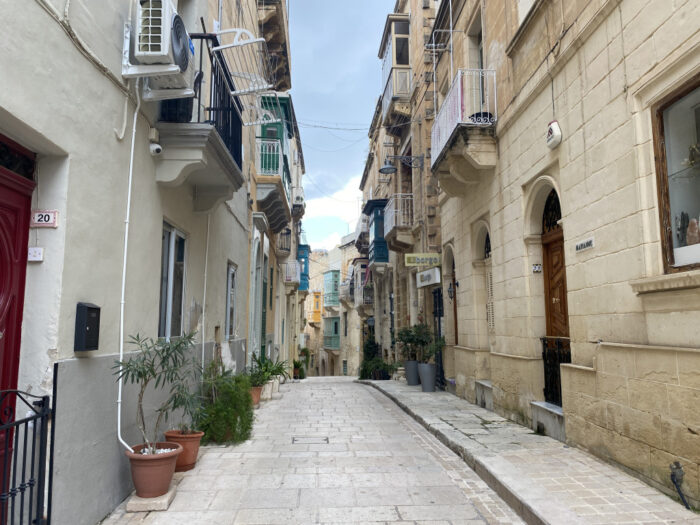

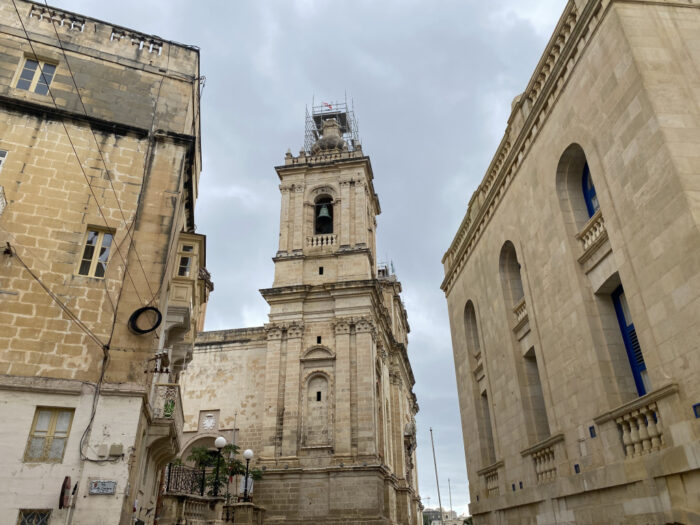
Birgu with a Kid
Birgu might not be the most kid-friendly town in Malta. You might be saved if your kid loves boats. Then they will have plenty of large yachts to look at. Other kids might find this interesting for a few minutes. Fort Saint Angelo can also be interesting for some time, otherwise, it is just to head outside the city walls to find the playgrounds or go on excursions to nearby beaches or play areas.
Playgrounds in Birgu
Finding playgrounds inside the city walls of Birgu might be a mission destined for failure. Instead, there is a smaller playground to be found along St Edward Street, right outside the city walls at Saint John Bastion. The playground is quite small with just a few activities available. There are also more alternatives in nearby Conspicua, as well as the larger play areas of Park ta’ San Klement.
Read more about Malta with kids:
There are more towns and villages to discover. Join us in Exploring Malta >>
